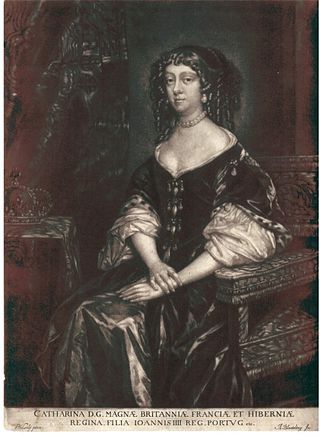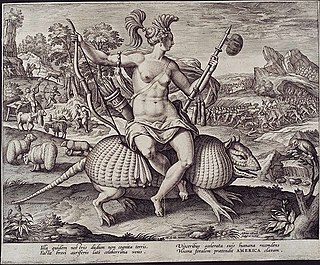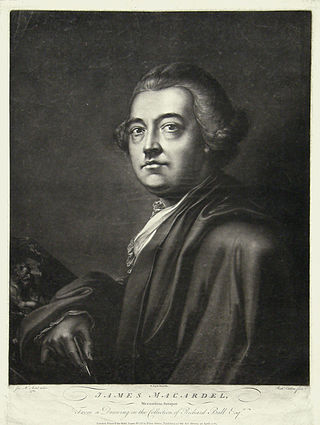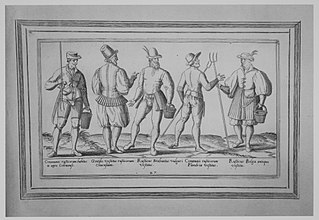
Johann Theodor de Bry was an engraver and publisher.

Benoît Audran the Elder was a French engraver.
Jean Audran (1667–1756) was a French engraver and printmaker. The brother of Benoit, and the third son of Germain Audran, he was born at Lyons in 1667. After learning the rudiments of the art under his father, he was placed under the care of his uncle, the famous Gérard Audran, in Paris. Before he was twenty years of age he displayed uncommon ability, and became a very celebrated engraver. In 1706 he was made engraver to the king, with a pension and apartments at the Gobelins. The hand of a great master is discernible in all his plates; and without having attained the extraordinary perfection of Gérard Audran, his claim to excellence is very considerable. He died in 1756. His principal prints are:
Dominique Barrière (c.1622–1678) was a French painter and engraver.

Isaac Beckett was an English mezzotint engraver, one of the first practitioners of the art in the country.

Frederik Bloemaert was a Dutch printmaker and draftsman.

Abraham Blooteling (1634–1690) was a Dutch designer and engraver.
Cornelis Boel was a Flemish draughtsman and engraver. He is sometimes known as Cornelis Bol, or Cornelis Bol I, to distinguish him from later artists of the same name.

Schelte a Bolswert (1586–1659) was a leading Dutch engraver, noted for his works after Rubens and Van Dyck.

Frederik Bouttats was an engraver born at Antwerp about the year 1620. He engraved several plates after his own designs, principally portraits, and some after other masters. They are worked with the graver, in a neat style, and are not without merit. We have by him, among others, the following:

Isaac Briot a French engraver and draughtsman, was born in 1585, and died in Paris in 1670. His plates are rather neatly executed, in the style of Wierix, and mostly from his own compositions.

Adriaen Collaert was a Flemish designer and engraver.

Pierre Daret de Cazeneuve, a French portrait painter and engraver, was born in Paris in 1604. After receiving some instruction in engraving, he went to Rome to improve his skill, and spent a considerable time there. He was received into the Academy of Painting in 1663.

Nicolaes de Bruyn was a Flemish engraver, who after training in Antwerp was active in the Dutch Republic.

James MacArdell was an Irish mezzotinter.

Simon de Vries, also known as Simon Frisius, was a Dutch engraver.

Zacharias Dolendo (1561–1601) was a Dutch engraver. He was the brother of Bartholomeus Dolendo, whom he surpassed both in style and in correctness.

Léonard Gaultier, or, as he sometimes signs himself, Galter, a French engraver, was born at Mainz about 1561, and died in Paris in 1641. His style of work resembles that of Wierix and Crispyn van de Passe. His prints are executed entirely with the graver, with great precision, but in a stiff, formal manner. He must have been very laborious, as the Abbé de Marolles possessed upwards of eight hundred prints by him, many of which were after his own designs. They consist of portraits, and various subjects, of which the following are the most worthy of notice. They are sometimes signed with his name, and sometimes with a cipher GL.

Julius Goltzius was a Flemish printmaker and publisher. He was probably born in Antwerp around 1555 as the son of the painter, printer, publisher and humanist Hubert Goltzius and his wife Elisabeth Verhulst. His mother came from a well-known family of painters and illuminators from Mechelen. Her sister Mayken Verhulst married Pieter Coecke van Aelst and became the mother-in-law of Pieter Bruegel the Elder. Julius Goltzius married in 1587 in Antwerp and probably died in that city well after 1601.
The Audran family was a French family of engravers and painters, mainly active in Paris and Lyons. The first well-known member was Charles Audran (1594–1674).



















